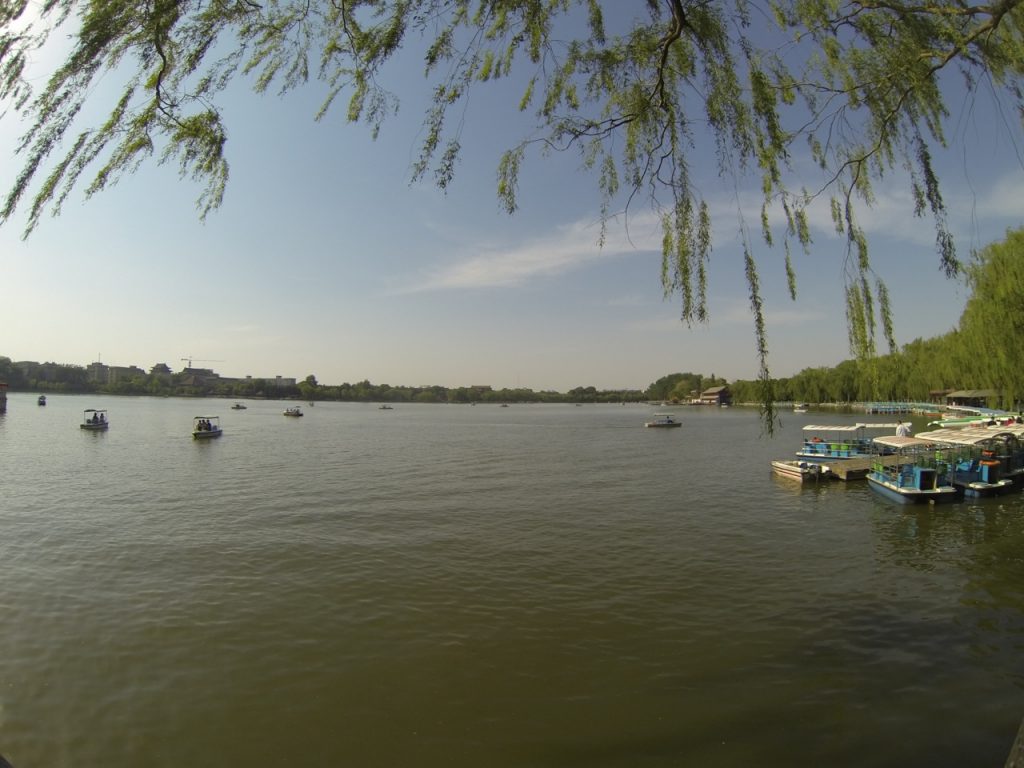Directions and Location in Chinese (Part One) Posted by sasha on Jul 12, 2017 in Vocabulary
In our last post, we learned some useful Chinese for travelers. There were a few phrases about directions in there, but there’s lots more you’ll want to learn to be able to ask for and understand directions. We’re here to help you do just that. This first post will be a list of common places along with location words and how to use them. Hopefully it will help you better understand directions and locations in Chinese.
A List of Common Places
First up, here’s a list of 25 common places that you’ll find in most cities. This will come in handy whether you’re just traveling in China or if you end up living there.
airport
bank
bar
bathroom
bus station
cafe
convenience store
gas station
gym
hospital
hotel
laundromat
library
movie theater
museum
newsstand
park
phamaracy
police station
restaurant
school
shopping mall
supermarket
train station
zoo
飞机场
银行
酒吧
厕所/卫生间
公交车站
咖啡馆
便利店
加油站
健身房
醫院
旅馆/酒店
自助洗衣房
图书馆
电影院
博物馆
书报摊
公园
药店
警察局
餐厅/饭店
学校
购物中心
超市
火车站
动物园
fēi jī chǎng
yín háng
jiǔ bā
cè suǒ/wèi shēng jiān
gōng jiāo chē zhàn
kā fēi guǎn
biàn lì diàn
jiā yóu zhàn
jiàn shēn fáng
yī yuàn
lǚ guǎn/jiǔ diàn
zì zhù xǐyī fáng
tú shū guǎn
diàn yǐng yuàn
bó wù guǎn
shū bào tān
gōng yuán
yào diàn
jǐng chá jú
cān tīng/fàn diàn
xué xiào
gòu wù zhòng xīn
chāo shì
huǒ chē zhàn
dòng wù yuán
Save that list or make some flashcards with it – whatever it takes to get you using and remembering those common places. Now let’s learn some words related to location that will be useful.
Location Words
We’ll get into the nitty gritty for asking for and giving directions in Part Two. Phrases such as “go straight” and “turn left in 2 blocks” will be taught in that post. For now, we’re just going to focus on basic location words. Here are some of the most common location words you’ll use in Chinese:
under/below
in front
behind
right
left
in
out
east
west
north
south
下
前
后
右
左
里
外
东
西
北
南
xià
qián
hòu
yòu
zuǒ
lǐ
wài
dōng
xī
běi
nán
When describing the location of places, you’ll usually have to add one of two characters after the location word:
边/面 (biān/miàn)
Here are a few examples of how you use these to describe a location:
-
in front of (前面 – qián miàn)
-
to the north of (北边 – běi bian)
-
outside (外边 – wài bian)
-
inside (里面 – lǐ miàn)
Basically, you can use either/or for all of the words above. It’s not always necessary, but you might as well get used to using them. In spoken Chinese it’s rare to add either of these characters to 上 or 下. Generally speaking, though, it doesn’t matter which one you use. People will understand you either way.
A Few Special Cases
There are a few other words we can learn here that are special cases:
-
beside/next to (旁边 – páng biān)
-
opposite (对面 – duì miàn)
-
in the middle (中间 – zhōng jiān)
These only use one or the other and you can’t mix them up. For example, people don’t say 旁面 or 中边.
Some Examples
Now let’s look at a few Q&A examples asking for and giving the location of a place:
博物馆在哪里?
bó wù guǎn zài nǎ lǐ
Where is the museum?
博物馆在酒店旁边
bó wù guǎn zài jiǔ diàn páng biān
The museum is next to the hotel.
银行在哪里?
yín háng zài nǎ lǐ
Where is the bank?
银行在医院对面
yín háng zài yī yuàn duì miàn
The bank is opposite the hotel.
动物园在哪里?
dòng wù yuán zài nǎ lǐ
Where is the zoo?
动物园在公园里面
dòng wù yuán zài gōng yuán lǐ miàn
The zoo is inside the park.
Hopefully you can see the sentence structure at work through those three examples. Go ahead and try to translate a few on your own using the vocabulary we’ve already learned:
Where is the restaurant?
It’s in front of the library.
Where is the cinema?
It’s north of the supermarket.
Where is the police station?
It’s left of the gas station.
Once you’ve got this formula down and you’ve memorized the places and location words, you’ll be well on your way. In the next post, we’ll look at more detailed directions that will be useful when taking a cab or asking people on the street if you’re lost.
Read on for Part Two…

Build vocabulary, practice pronunciation, and more with Transparent Language Online. Available anytime, anywhere, on any device.






Leave a comment: